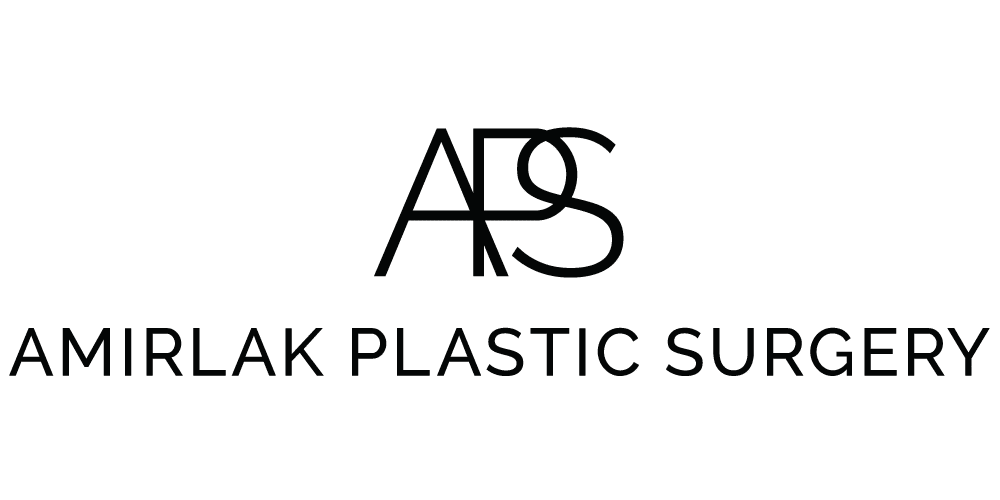Breast Augmentation in Dallas, TX
What is a Breast Augmentation?
Breast augmentation (mammaplasty) is performed to increase breast size and/or fix breast asymmetry. Candidates include women who want larger breasts, and those who want to restore the breast volume often lost as a result of pregnancy or significant weight loss. Breasts can be enlarged with breast implants or by fat transplantation. Breast augmentation is not a substitute for mastopexy, which is a procedure to “lift” breasts that sag significantly.
If you are interested in breast augmentation in Dallas TX and surrounding areas, call Amirlak Plastic Surgery to schedule a consultation today.
Breast Augmentation with Breast Implants
Silicone and saline are the two types of breast implants most commonly used in a breast augmentation. Silicone breast implants feel more like natural breasts than saline breast implants. However, if a saline implant ruptures, the saline is naturally absorbed by the body, whereas if a silicone implant has an extracapsular rupture (a rupture to the outer capsule), silicone filler leaks into the body, possibly resulting in inflammatory nodules or enlarged lymph glands.
About Silicone Breast Implants
About Saline Breast Implants
Advantages of placing breast implants behind the chest-wall muscle include a possible reduced risk of capsular contracture (hardening of scar tissue around the implant) and less interference during mammograms. Disadvantages include the possible need for drainage tubes and a longer recovery period.
Advantages of placing breast implants beneath breast tissue include that the breasts move more naturally as the patient uses her chest muscles, and that slight breast sagging is corrected.
Other types of breast implants utilized during breast augmentation include “gummy bear,” round, smooth and textured.
Before and After
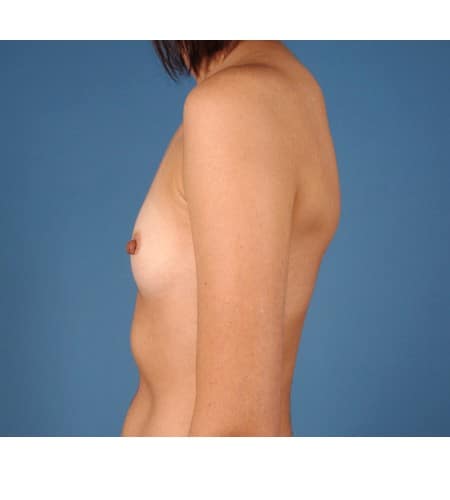
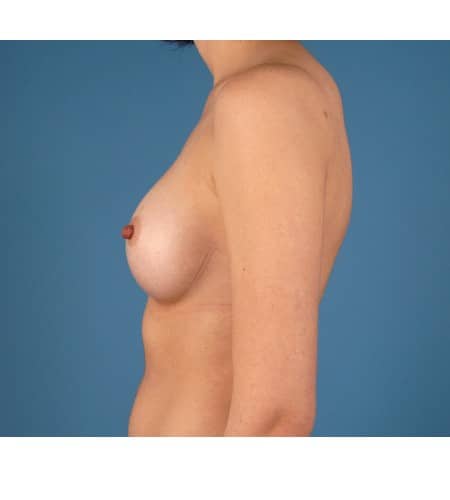
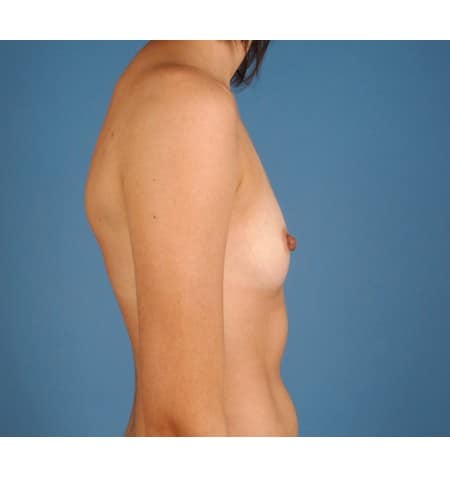
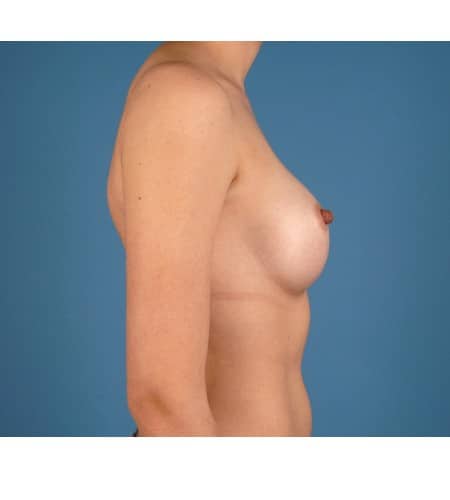
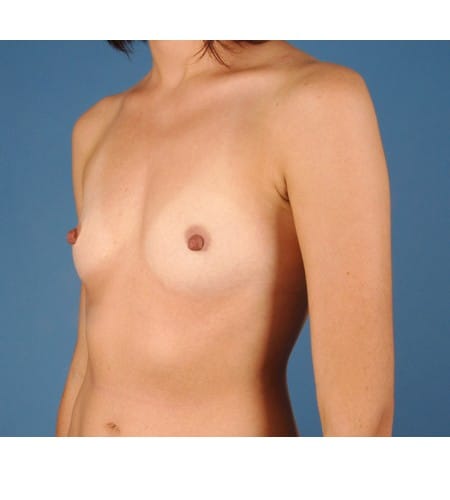
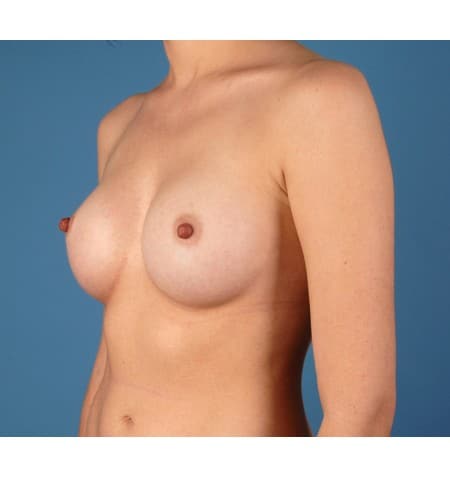
Breast Augmentation with Fat Transplantation
For a number of weeks prior to breast augmentation, tissue expanders may be placed below the muscles of the chest wall to expand the breasts, and increase the amount of fat they can hold. When the tissue has expanded enough, your breast augmentation using fat transfer can begin. First, fat is removed using liposuction, in which a cannula (a thin, hollow tube) is inserted through small incisions, and then moved back and forth to loosen excess fat, which is suctioned out using a vacuum or a cannula-attached syringe. The harvested fat cells are then purified. In the second procedure, which takes place on the same day, the fat is injected into the breast through small incisions. The procedure takes approximately 4 to 5 hours.
Recovery for Breast Augmentation
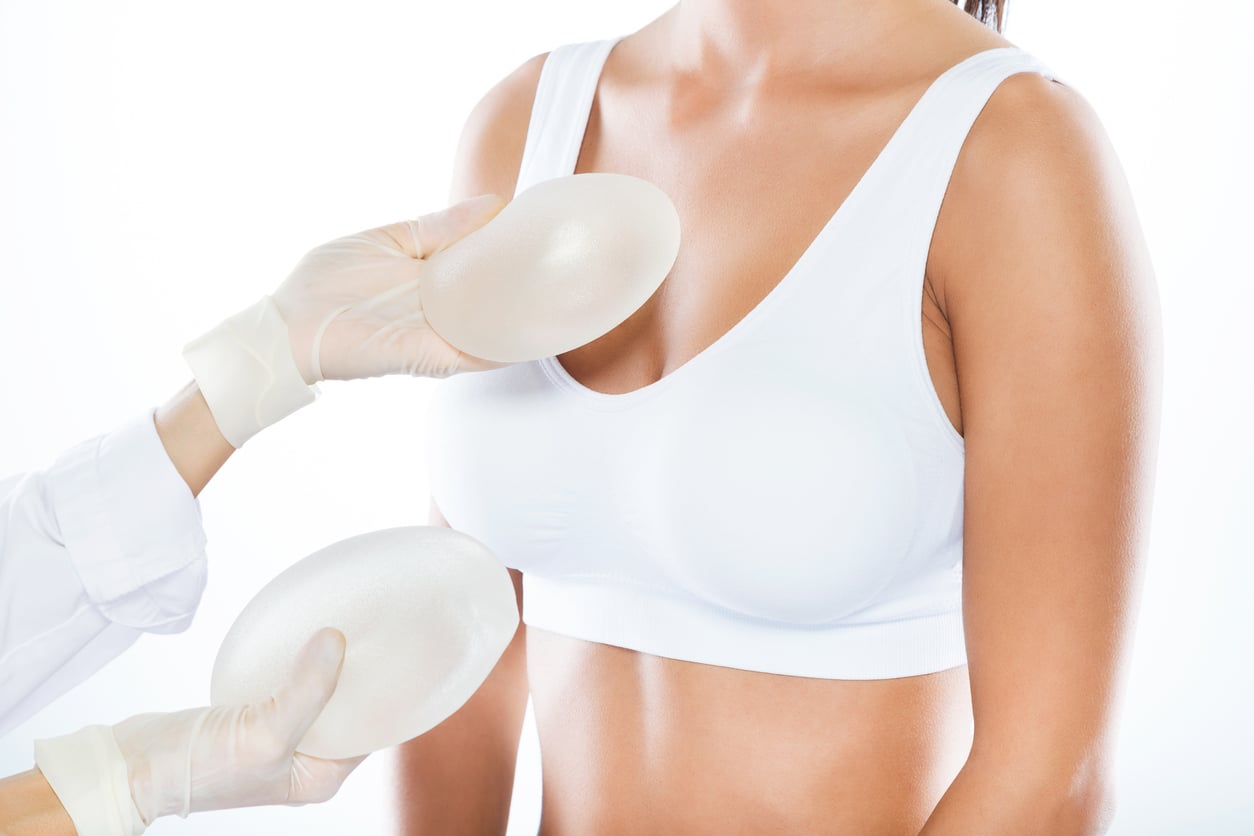
After a breast augmentation with fat transplantation, recovery time is short, with normal activities being resumed as soon as the patient feels comfortable. Compression garments are typically worn over the areas that received liposuction.
Breast Augmentation Risks
In addition to the risks associated with surgery and anesthesia, those related to breast augmentation using breast implants include the following:
- Asymmetry
- Capsular contracture
- Implant leaks and ruptures
- Implant deflation or shifting
- Irregularities in breast contour/shape
- Partial or total loss of nipple/areola
- Temporary or permanent change in nipple/breast sensation
The risks related to breast augmentation using fat transplantation include those related to liposuction, as well as the following:
- Calcification
- Fat embolism
- Fat necrosis
- Oil cysts
- Loss of volume
Because of the loss of volume that occurs when fat is reabsorbed by the body, touch-up injections of fat are often necessary. Injections can be performed using local anesthesia.
Breast Augmentation FAQs
Who is a Candidate for Breast Augmentation?
A woman who wants to increase the size of her breasts, to fix asymmetrical breasts, or to restore lost volume to her breasts is a candidate for breast augmentation. She must have fully developed breasts, be physically healthy, and have realistic expectations about the outcome of the surgery.
How are Breasts Augmented?
There are two ways of augmenting breasts: breast implants and fat implantation (fat transfer; fat grafting). Silicone, saline, “gummy bear,” round, smooth and textured are types of implants that are inserted underneath either breast tissue or the chest-wall muscle. Fat transplantation (fat transfer) uses liposuction to harvest excess fat from other parts of the patient’s body; the fat is then injected into the breasts.
How Much Scarring is Caused by Breast Augmentation?
During breast augmentation using breast implants, incisions are made in inconspicuous places (in the armpit, in the crease on the underside of the breast, or around the areola), which minimizes scar visibility. During breast augmentation using fat transplantation, there are no incisions because fat is injected, so scarring is rarely an issue.
What are the Risks and Complications of Breast Augmentation?
In addition to the risks associated with surgery and anesthesia, those related to breast augmentation using breast implants include capsular contracture; implant leaks and ruptures; and implant deflation or shifting. The risks related to breast augmentation using fat transplantation include calcification; fat embolism or necrosis; and oil cysts. In addition, because of the loss of volume that occurs when fat is reabsorbed by the body, touch-up injections of fat are often necessary.
Is it Better to have Breast Augmentation with Breast Implants or Fat Transplantation?
Which procedure is more appropriate depends on the particular patient and the goals of the surgery. Breast augmentation using breast implants is appropriate for women who want to significantly increase breast size. Breast augmentation using fat implantation is appropriate for women who are not looking for a dramatic increase in breast size and want breasts that look and feel as natural as possible. In some cases, implants and fat transplantation are used together.
How Much Recovery Time Does Breast Augmentation Require?
After breast augmentation with breast implants, most patients feel tired and sore, but many returns to work within a week. After breast augmentation with fat transplantation, recovery time is quite short, with normal activities being resumed as soon as the patient feels comfortable.
Amirlak Plastic Surgery proudly provides patients from Dallas TX and surrounding areas with breast augmentation. Contact us at (214) 974-4948 or fill out a Contact Form here.
